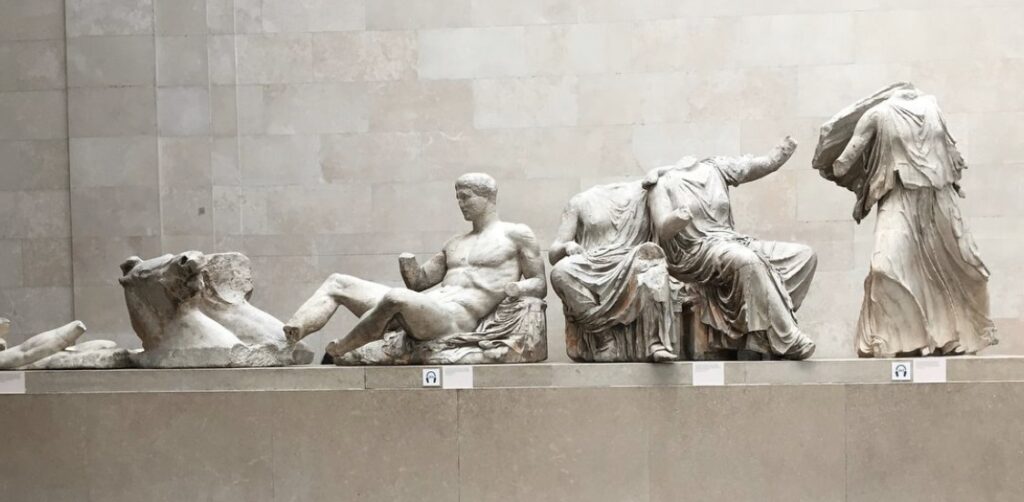
With the event of Brexit – the United Kingdom officially leaving the European Union this year after 47 years of membership – a series of petitions requesting the return of ancient Greek sculptures, marbles and other pieces of art to their homeland, Greece, has become the topic of discussion among numerous EU leaders.
And although the UK government seems against even negotiating the return of the Elgin marbles, a plethora of polls by the BBC, The Guardian, The Independent and yougov.uk indicate that the general public of Great Britain are pro-return.
This topic is not, of course, new.
The movement to return the Greek marbles (that have been curated in the British museum for over 200 years) to their motherland started in the 1980s, when the then Greek Minister of Culture, Melina Mercouri, initiated the global campaign International Association for the Reunification of the Parthenon Sculptures.
Moreover, during a debate about the return of the Elgin Marbles that was aired in a broadcast of the Intelligence Squared show in Britain, one of the most prestigious actors and writers in the UK, Stephen Fry, stated:
“How amazing it would be to see these extraordinary pieces of Pentelic marble being returned to within 5 miles of Mount Pentelicus, where the marble was quarried, and where that extraordinary temple of Parthenon was erected.”
“It is all about Athens! There are 192 soldiers on the friezes, because 192 soldiers died at the Battle of Marathon.
“It is absurd to have the torso of a statue here and the head in Athens,” he added emphatically.
“And it was during that time of the Marathon battle, where the Periclean Athens saw the rise of everything that our culture now depends on: philosophy, logic, Euclidean mathematics, empiricism, history, geometry, astronomy and justice.
“It is not just about being fair, it is about showing our morals and the depth we have towards Greece, which created what we call today the western civilization,” Mr. Fry stressed in front of an audience as he gave his argument.
The debate ended with 72% of the British audience voting live for the return, 23% voting against and 5% remaining undecided.
But it is not just the Elgin marbles and Parthenon friezes that have been removed from Greece.
In fact, some of the most magnificent Greek sculptures and pieces of Greek art are located in various museums around the world, proudly representing the country in which they were born.
Nike of Samothrace – Louvre Museum, Paris (Νίκη της Σαμοθράκης)
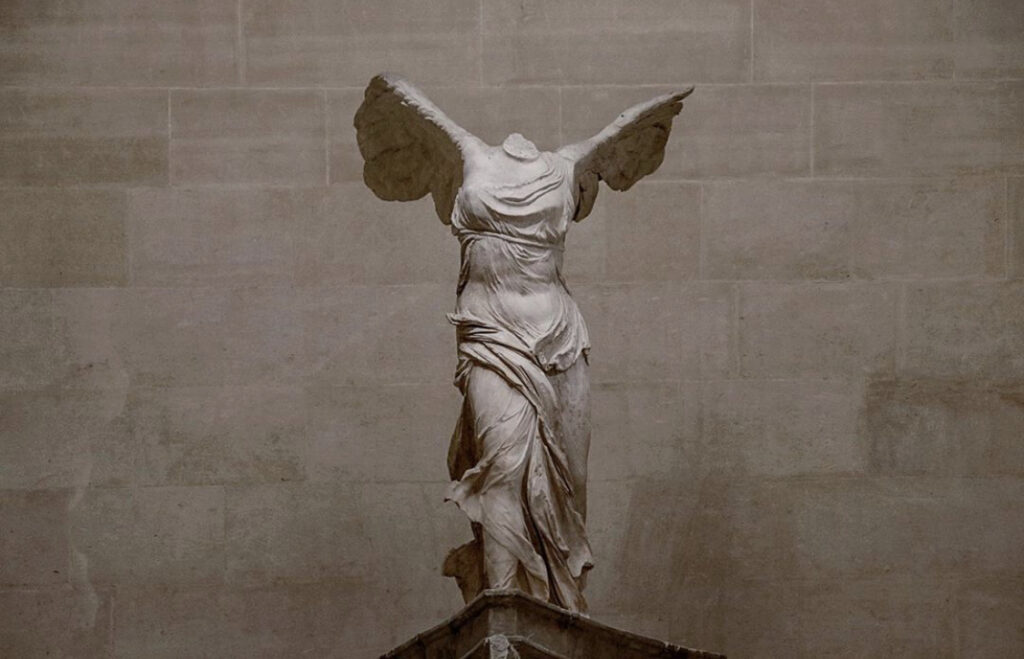
The Nike of Samothrace – also known as Winged Victory of Samothrace – is a Greek sculpture made of marble that depicts the winged goddess Nike.
It was created in the Hellenistic era and found in the Temple of the Great Gods or Kaveira in the island of Samothrace.
The majestic Greek statue has been on display at the Louvre Museum in Paris since 1884, and while the name of its sculptor remains unknown, the statue’s fame has reached the ends of the earth and has remained a symbol representing Greek art around the world.
It is estimated that it was created in the 2nd century BC and adorned the Sanctuary of the Great Gods in Samothrace.
Many say it was a tribute to Demetrius the Besieger, who defeated Ptolemy’s fleet in 290 BC, or it was dedicated to the island of Samothrace by the Rhodians, when they defeated Antiochus III of Syria in a naval battle.
Nike has been reconnected with all of its discovered parts that were excavated separately over the years – Nike’s head and left hand were never found – and while the statue was damaged and broke during her transfer to Paris, a team of experts repaired this damage.
In 2014, the Louvre Museum raised a total of 4,000,000 € from sponsors around the world to restore the statue, and later built its right wing which is now attached to the statue and is a mirror image cast of the original left wing.
In addition to the statue in France, a replica is displayed in the Archaeological Museum of Samothrace in Greece and another Roman replica in Vienna.
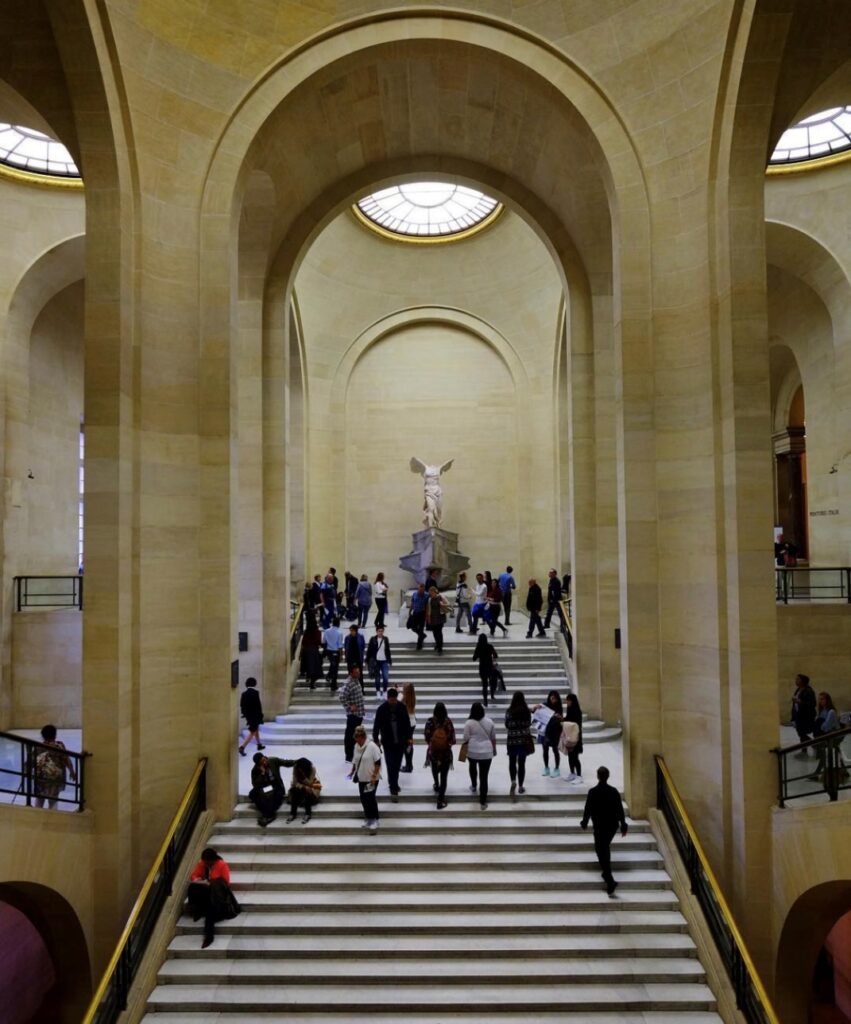

Venus De Milo – Louvre Museum, Paris (Αφροδίτη της Μήλου)
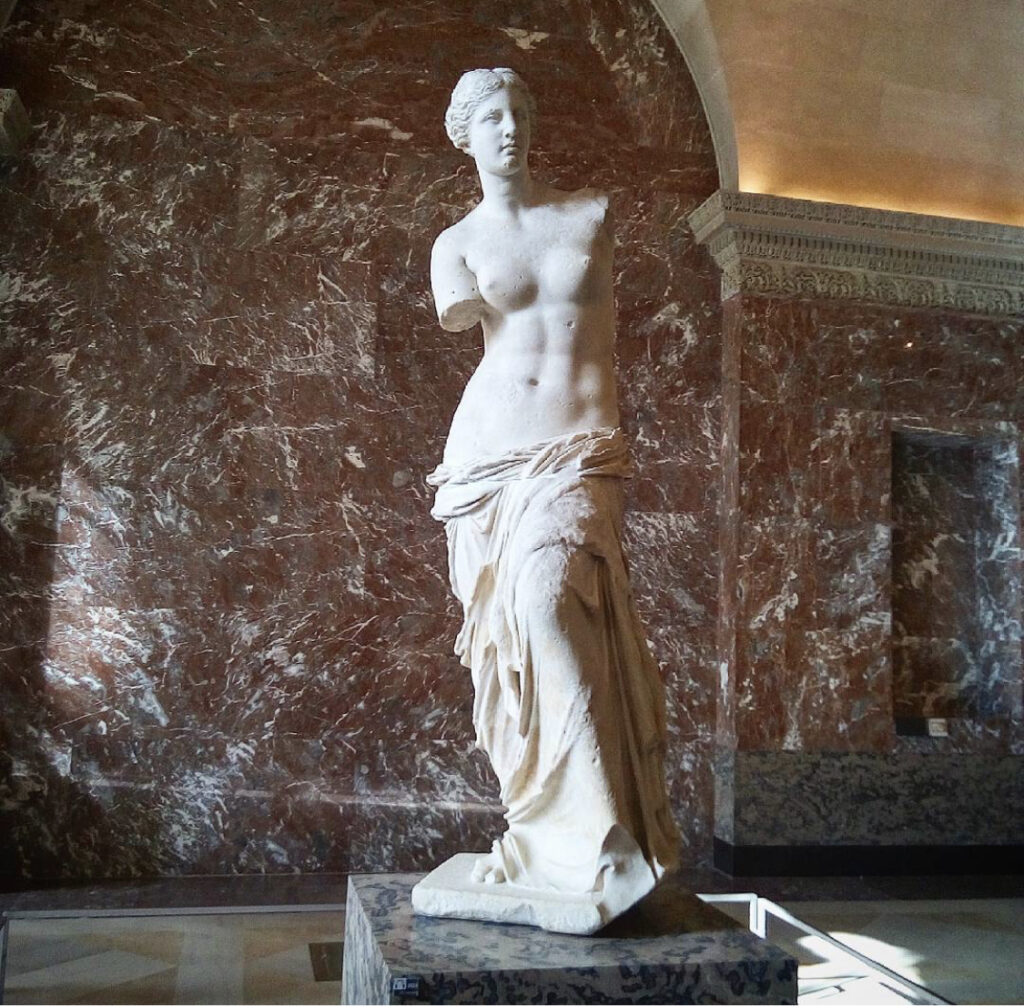
A unique creation of the late Hellenistic period, the 2 metre tall, 900 kilogram marble Venus De Milo statue depicts Aphrodite, the goddess of beauty and love, who is half naked, wearing only a robe tied around her hips.
Initially it was believed that Venus De Milo (Aphrodite of Milos) was the work of Praxiteles or Skopas, but today it is firmly believed that the statue is the work of the sculptor Alexander of Antioch.
In April 1820 in Klima on Milos Island, a farmer named Georgios or Theodoros Kentrotas, found the female statue while digging in his field.
A French warship was already located in Milos at the time looking for Greek sculptures and the leader of the crew, officer Olivier Boutier, negotiated with the Turks who did not understand the immense value of the Greek sculpture.
Thus Boutier managed to acquire the Venus De Milo and send it directly to France.
The two missing hands of Aphrodite were destroyed either during the excavation by the French crew or during the transportation to Paris, but despite the great adventures she went through, Aphrodite remains to this day one of the most exceptional works of art.
Therefore it is no surprise that in the Louvre in Paris, the most visited museum in the world ever, the three biggest attractions for millions of tourists each year, are Leonardo DaVinci’s enigmatic Mona Lisa as well as two Greek sculptures: the Nike of Samothrace and the Venus De Milo.
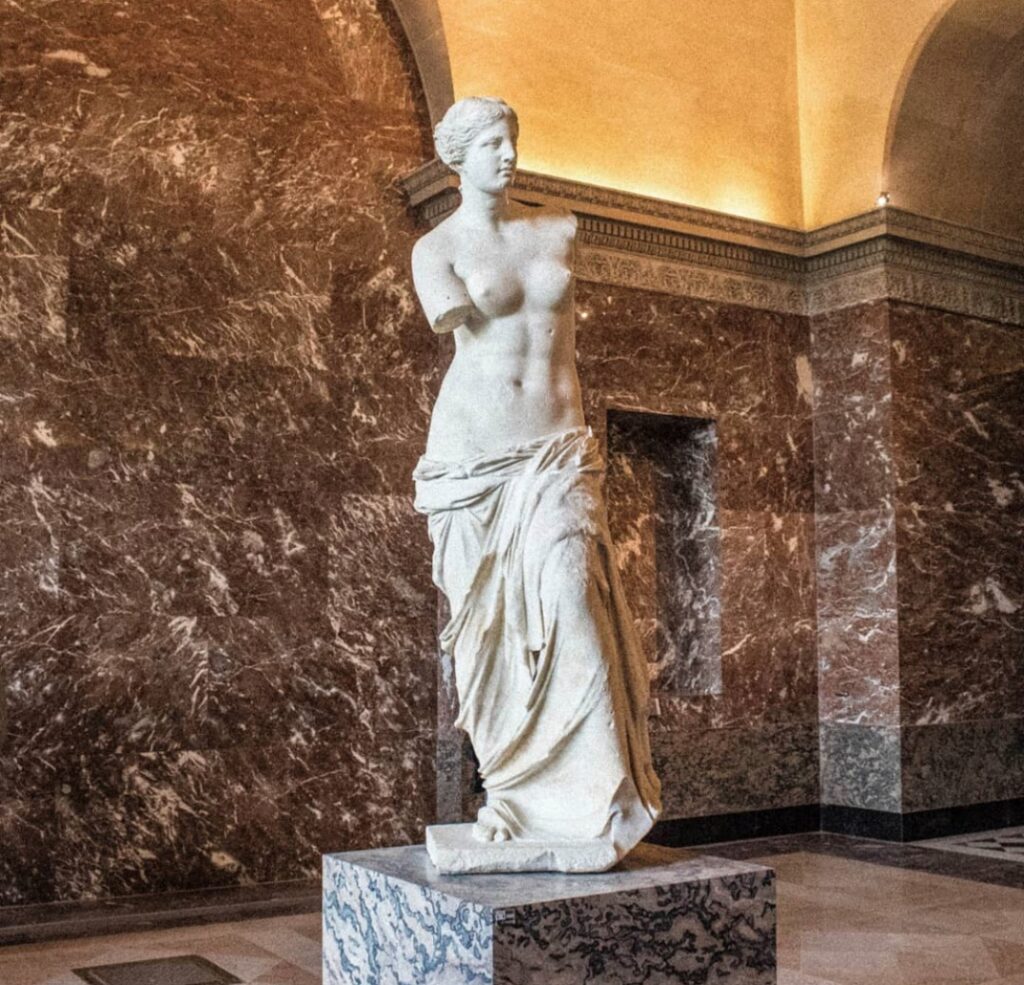
Pergamon Altar – Pergamon Museum, Berlin (Βωμός της Περγάμου)
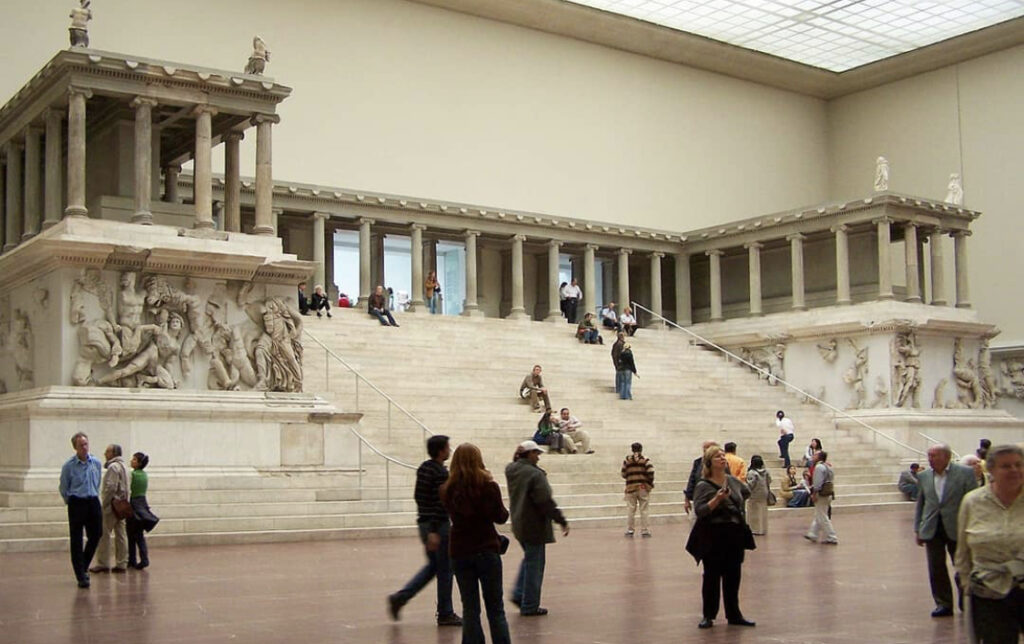
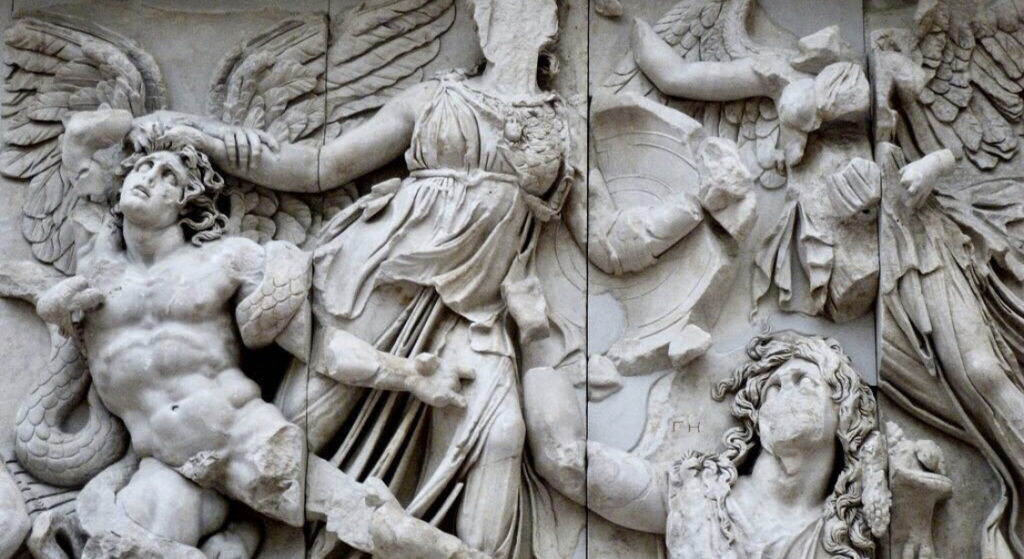
The Altar of Pergamon is an altar dedicated to Zeus and Athena, that was built in the Hellenistic era on the citadel of Pergamon in Asia Minor.
The sculptures and friezes on the altar depict the famous Gigantomachia (fight of the giants), where the composition of the bodies, the intricate depiction of the details in the contractions of the muscles and folds of the sleeves, and the intensity of their intertwining, all recreated as one of the most wonderful sets ever seen by the human eye.
The altar was built by order of Eumenes II of the Seleucid generation in honour of the father of Attalus AD, who ruled in Pergamon after his victory against the Gauls.
It was built around 181-159 BC, and was discovered between 1878 and 1886 by the German archaeologist Karl Humann, who made an agreement with the Ottomans to send all the sculptures that were discovered to a special museum in Berlin and to remodel the altar.
During transportation, the sculptures and friezes were damaged and fell apart, but later in Berlin, a team of Italian restorers reassembled the panels comprising the frieze from the thousands of fragments that had been recovered.
In 1901 a new museum was erected on Berlin’s Museum Island to display the reassembled altar, but this proved to be both inadequate and structurally unsound to host the large altar, so was demolished in 1909 and replaced with a much larger museum which opened its doors to the public in 1930.
Despite the fact that the new museum held items sourced from a variety of collections of different countries, the city’s inhabitants decided to name it the Pergamon Museum in honour of the Altar of Pergamon and because the museum was built with the Greek altar’s architecture in mind.

The Parthenon Marbles – British Museum, London (Τα Μάρμαρα του Παρθενώνα)
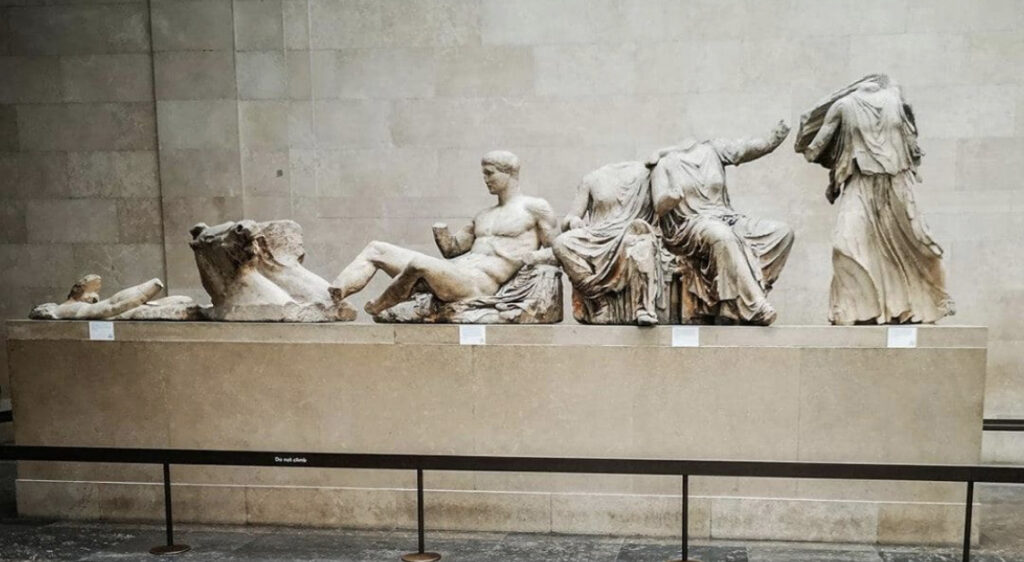
The Parthenon Marbles, also widely known as Elgin Marbles, are a collection of sculptures from the Parthenon Temple of the Acropolis in Athens, that were brought to Britain in 1806 after being violently removed from the Parthenon by Thomas Bruce, 7th Earl of Elgin.
Lord Elgin was the first British ambassador to the Ottoman Empire. Although Turkey had declared war on Napoleon’s France and Great Britain, Lord Elgin was very much liked by the Turkish authorities as he used to offer them expensive gift in return for various favours, regardless of whether he was engaging with the enemy.
In the 1800s, Lord Elgin was designing the decoration of his mansion in Scotland and was looking to decorate it with ancient Greek sculptures, so he hired a team of artists to make copies of Greek statues for his own property.
After negotiating with the Turks, Elgin arbitrarily, and of course without considering the Greek people, removed 50% of Parthenon’s sculptures, while damaging the majority of them.
His greed, however, did not stop there as he also removed pieces form nearby temples and the Erechtheion as well. The result was that many of these statues that were built by Athenian sculptor Pheidias for the city of Athens, were dismembered.
Elgin reportedly received a license, albeit limited and conditional, from a Turkish vizier, which allowed him take some of the pieces of Parthenon – which of course belonged and belong to Greece and its people, who were never asked – to England .
“The key question is whether this license allow Elgin to use huge saws and other tools to totally uproot from the temple (causing serious damage to the monument) half of its sculptures.
“The Greeks say no. Archaeologists and historians, including the British, say no. UNESCO says no, members of the European Parliament say no. To his great surprise, Lord Elgin himself says no!” legendary and Oscar-winning American director, Jules Dassinin famously said about the topic.
“Specifically, Elgin in his letters mentioned that: it was not part of my original plan to take anything but casts with me. The Turkish government categorically denied that the people who sold us the marbles had any right to dispose of them,” Dassin wrote.
It is indeed sad that during the Turkish occupation, all kinds of European ‘archaeologists’ sought the Greek treasures of antiquity for personal gain and exploitation.
British, Germans and French made organized excursions in order to locate and retrieve Greek sculptures and valuable works of art that symbolize the Greek history and culture.
Where necessary, they just ‘compensated’ the local Ottoman commanders to obtain excavation and research permits and still to this day, museums across Europe attract every year millions of people from all over the world thanks to these sculptures.
In the words of Melina Mercouri: “I hope to see the Marbles back in Athens before I die. But if they come later, I will be born again.”
May the Greek sculptures may one day reconnect with their missing parts in the land where they were crafted.
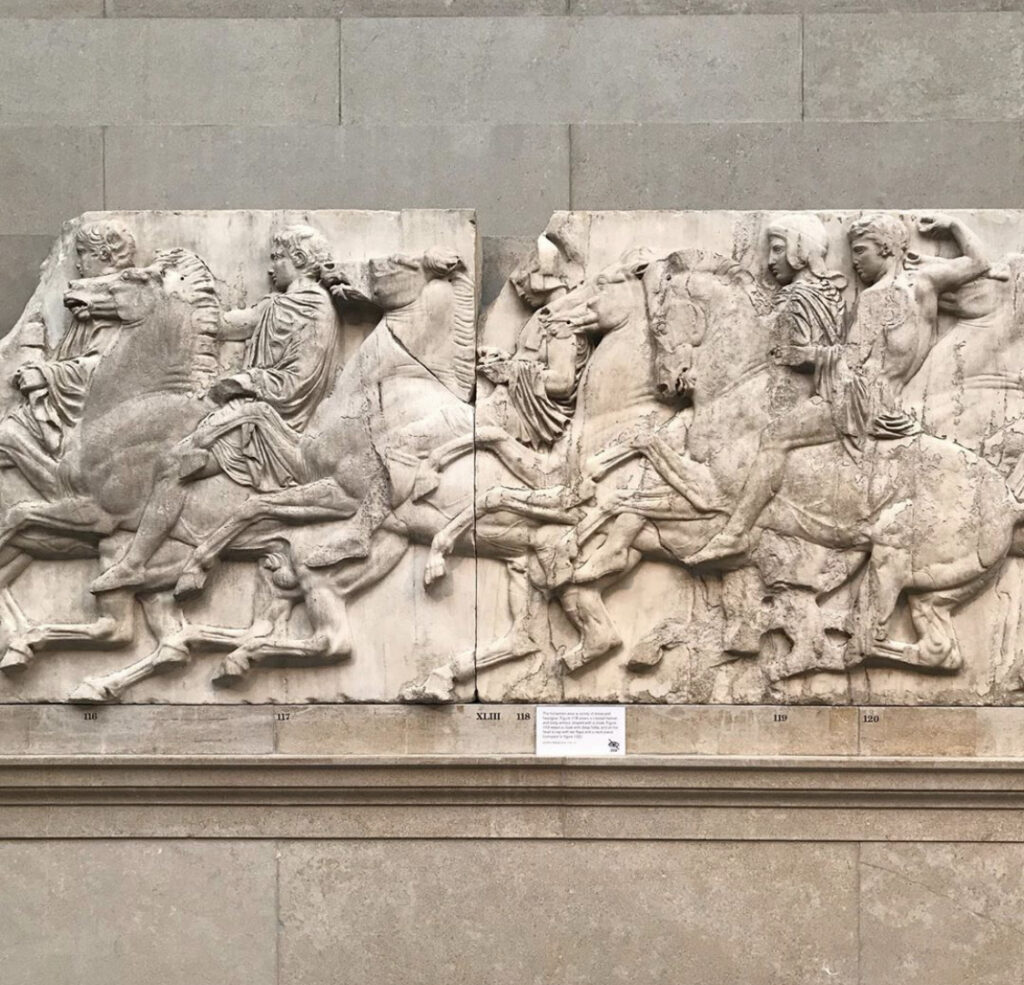

Read more on Greek City Times:
On this day in 1982: Melina Mercouri tells the world Parthenon Marbles must return to Greece
Greek artist sings for the return of the Parthenon Mables at the British Museum

